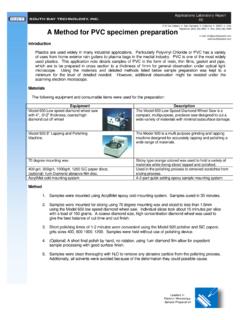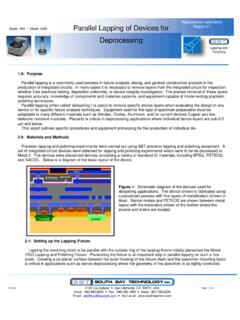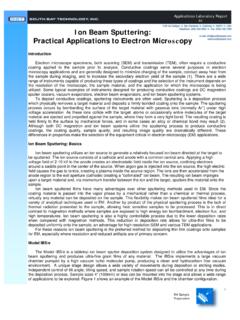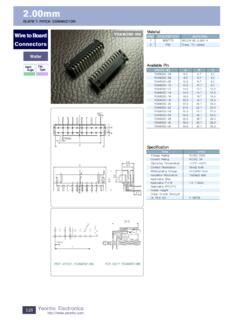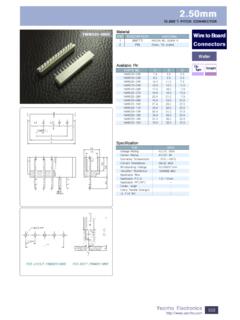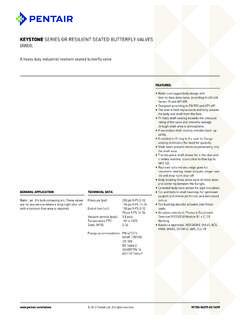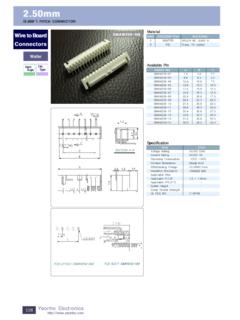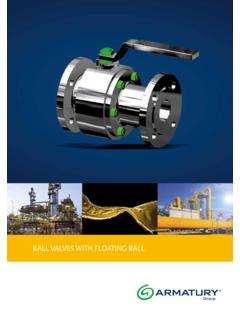Transcription of Lapping and Polishing Si Die and Wafers
1 / 8/9 : PurposeThe primary aim of this report is to describe and compare various Lapping and Polishing techniques available for preparingsmooth, highly polished surfaces of small Si Wafers and die. Lapping and Polishing techniques using the Model 920 Lapping and Polishing Machine and the Model 155 Lapping and Polishing Fixture will be investigated to determine thebest method for preparing these types of materials. Comparison of free abrasive Lapping techniques, cloth polishingtechniques, and paper techniques will be done based on preparation time, surface smoothness and quality, and ease : ExperimentsFor this experiment several different samples of a Si wafer were obtained for Lapping and Polishing experiments.
2 Thewafer pieces were cleaved into 10 mm x 20 mm rectangles as well as smaller 5 mm x 5 mm die sized squares. Each ofthese samples were then mounted onto a Model 155 Lapping Fixture using a low melting point wax (MWH 135) afterbeing heated on the hot plate. The samples were affixed to the mounting block and then measured prior to Lapping andpolishing. The samples were mounted onto the Model 920 and held into place on the Lapping machine using the Model92002 Workstation. Below is an image showing the setup used for preparing the 1: Setup used for Lapping and Polishing specimens in this Model 920 Lapping and Polishing Machine is shown equippedwith a Model 92002 Workstation and Model 155 Lapping andPolishing Fixture.
3 The Model 155 is shown captured in the Model92002 and is continuously rotated counter-clockwise. The lappingwheel also rotates counter-clockwise and is variable speed up to600 primary stages of preparation were used in this experiment: Lapping the surface to a desired thickness and polishingof the specimen to a specular surface. Different Lapping wheels and abrasive sizes were used to examine the surfaceand determine any detrimental effects imparted to the specimen. Several Polishing cloths were used also to find the bestcombination of consumables and parameters for preparing specimens of this : LappingLapping was first done using a relatively hard metal Lapping plate composed of cast iron (meehanite).
4 The hard metalplate is covered with an abrasive slurry which rolls between the specimen and the plate. Two different plateconfigurations were used in this experiment. One plate was a flat, smooth surface and the other consisted of finegrooves machined in the surface of the plate. Grooved plates are used when large, flat specimen surfaces are lappedto prevent specimen stiction. Below are two simple illustrations of the plate surface used for the andPolishingApplications LaboratoryReport 46 Lapping and Polishing Si Die andWafersModel 920 / Model155 / 8/9/99 Figure 2: Illustration of the two Lapping plates usedfor Lapping .
5 The plate on the left is astandard flat Lapping plate and the plateon the right consists of machined spiralgrooves in the the SpecimenSpecimens were lapped using several different abrasive grits. The following abrasive grits were used for the lappingprocess:14 m Boron Carbide: Mixed in a weight ratio of 1 part powder: 1 part water: 4 parts glycerine. Boron carbide hasa light density compared to most abrasives (density of ) and stays in suspension s blocky crystal shape is well suited to Lapping , providing a greater amount of edges usedin material removal.
6 8 m Boron Carbide: Mixed in the same ratio as the 14 m m Silicon Carbide: Mixed in the same ratio as the boron carbide abrasives. SiC is much more dense thanboron carbide (density of ) and therefore does not stay in suspension as long as boroncarbide. However, it does break down into finer particles and will sometimes yield aslightly better surface were lapped using an initial load of 50 grams and a Lapping wheel speed of 100 rpm (2 on dial). Theworkstation speed used was 21 rpm (5 setting on the dial).
7 Lapping of the specimen using the SiC abrasive proved tobe less efficient primarily due to difficulty in the use of the abrasive slurry. The abrasive does not stay suspended aswell as the BC abrasive does which tends to be more efficient in material removal. Below are images showing thevarious surfaces of the silicon specimens following the Lapping process using different abrasive 3: Images showing the surface of a Si specimen following Lapping with various abrasive types and sizes oncast Fe Lapping plate. In A) Macro image of die as mounted on the Model 155; B) 14 m BC; C) 8 mBC; D) 8 m SiC.
8 ACBD / 8/9 : Polishing the SpecimenFollowing Lapping , the specimens were then polished using a diamond abrasvie slurry on a variety of differentpolishing cloths. The use of fixed abrasives such as SiC papers were also attempted to demonstrate the differencesin surface finish with the different techniques. The specimens were evaluated optically for surface finish andsmoothness to ensure that the damage from the Lapping process had been removed and to ensure a specular finishon the surface of the die was obtained.
9 The following section describes the various Paper PolishingTo initially test the success (or lack thereof) in the use of abrasive papers for Polishing , several different grades of SiCpapers were used for rough and fine Polishing of the Si specimens following Lapping . Abrasive grits of 400 grit, 1000grit, and 1200 grit were used to polish the specimen following Lapping . The papers were used to remove themechanical damage induced by Lapping and to produce a specular finish on the specimens. Below are images takenof each grit size 4: Images of polished Si surfaces using SiC abrasive papers.
10 The specimens were polished following lappingon the cast iron Lapping plate with boron carbide abrasives. In A) the specimen has been rough polishedusing 400 grit paper. In B) the specimen has been polished using 1000 grit paper and still has a largeamount of scratching. In C) the specimen was polished using 1200 grit paper. The surface is severelypitted coupled with portions of polished areas. This shows that the mechanical damage from Lapping hasnot yet been the images above it is clear that the use of carbide papers for Polishing following the Lapping process are notsufficient to polish the specimen or to remove the mechanical damage imparted during Lapping .

